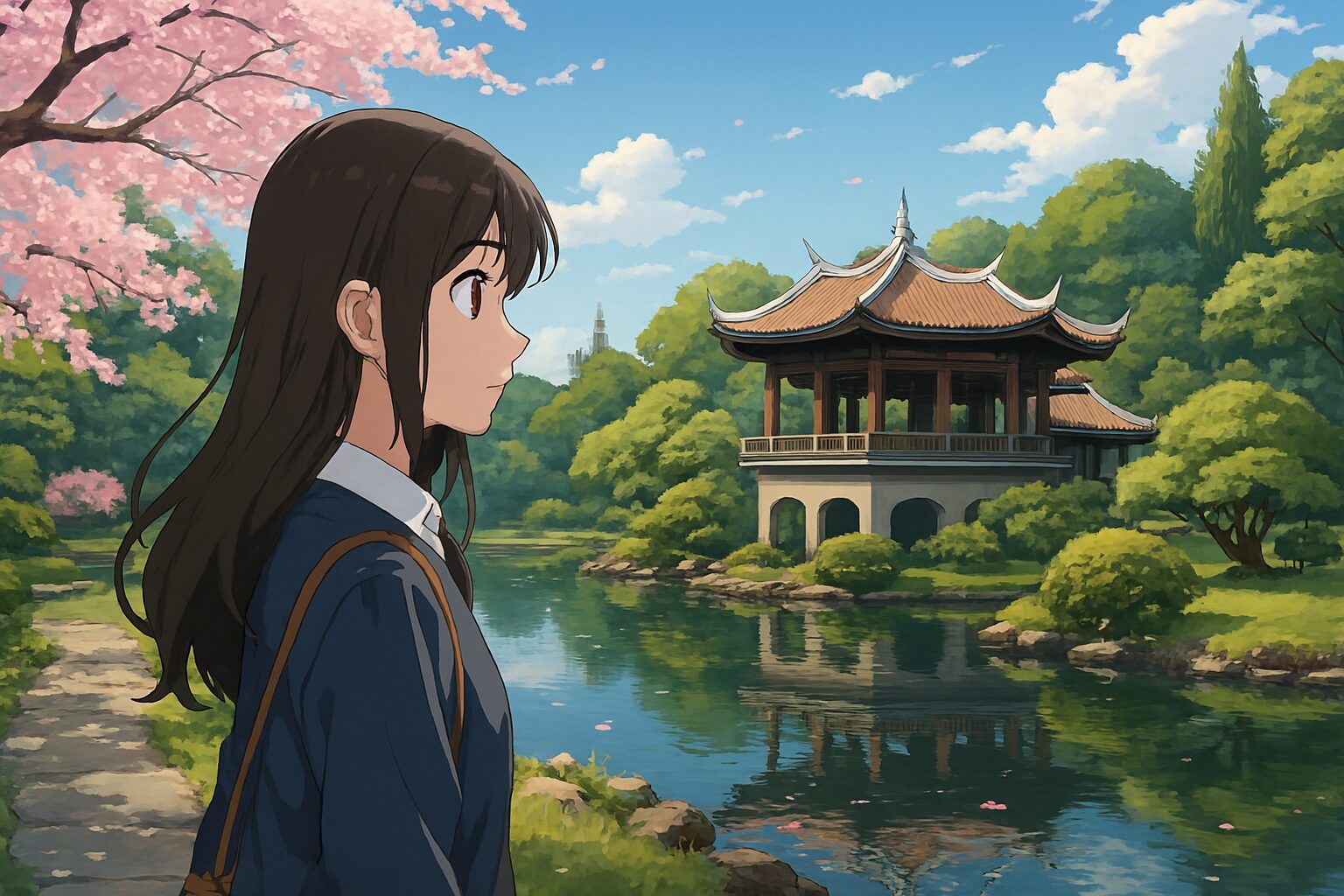- Introduction: What Is Shinjuku Gyoen?
- 🌿 Why Foreign Visitors Fall in Love with Shinjuku Gyoen
- 🧘♀️ Zen and Mindfulness: A Spiritual Experience
- 🌸 Seasonal Beauty: More Than Just Cherry Blossoms
- 🏛️ History and Architecture: A Legacy of Diplomacy
- 🌍 Visitor-Friendly Features
- ⚠️ Honest Impressions: Not Always Perfect
- ✨ Conclusion: A Different Tokyo Through Foreign Eyes
- 📌 Visitor Info
- はじめに:新宿御苑とは何か?
- 🌿外国人が惹かれる理由:都会のオアシス
- 🧘♀️禅と瞑想:スピリチュアルな体験の場
- 🌸四季の美:桜だけじゃない日本の自然美
- 🏛️歴史と建築:台湾閣と皇室の記憶
- 🌍インバウンド対応:外国人に優しい設計
- ⚠️リアルな声:手入れ不足や巨大グモ?
- ✨まとめ:外国人が見つけた“もう一つの東京”
- 📌アクセス情報
Introduction: What Is Shinjuku Gyoen?
In the heart of Tokyo’s bustling Shinjuku district—home to the world’s busiest train station and neon-lit nightlife—lies a serene oasis that feels worlds apart.
Shinjuku Gyoen National Garden is a rare fusion of three distinct garden styles:
- Traditional Japanese landscape garden
- Formal French garden
- English-style landscape garden
Originally built as an imperial estate, it now welcomes visitors from around the world as a public national garden. With over 58 hectares of meticulously designed nature, it offers a deeply immersive experience of Japanese aesthetics and seasonal beauty.
🌿 Why Foreign Visitors Fall in Love with Shinjuku Gyoen
✅ A Dramatic Contrast: From Chaos to Calm
“A great way to escape the hustle and bustle of Tokyo.” — Visitor from the U.S.
Just a five-minute walk from Shinjuku Station, you’ll find yourself surrounded not by skyscrapers, but by chirping birds, rustling leaves, and tranquil ponds. This contrast between urban noise and natural silence is what makes Shinjuku Gyoen unforgettable.
🧘♀️ Zen and Mindfulness: A Spiritual Experience
✅ A Place to Reset the Soul
“Spend an afternoon here just wandering around and enjoy the meditative effects.” — Visitor from Canada
Many foreign visitors describe Shinjuku Gyoen as a Zen-like space. Whether sitting on the lawn, gazing at koi ponds, or walking beneath pine trees, the garden offers a rare chance to slow down and reconnect with oneself.
It’s not just sightseeing—it’s soul-sightseeing.
🌸 Seasonal Beauty: More Than Just Cherry Blossoms
✅ Nature’s Calendar in Full Bloom
Shinjuku Gyoen is a year-round spectacle:
- Spring: Over 400 cherry trees bloom, creating one of Tokyo’s most beloved hanami spots
- Summer: Lush greenery and shaded paths offer cool relief
- Autumn: Maple trees and chrysanthemums paint the garden in fiery hues
- Winter: Snow-dusted landscapes and greenhouse orchids provide quiet elegance
Each season brings a new emotional palette, making repeat visits feel like entirely new experiences.
🏛️ History and Architecture: A Legacy of Diplomacy
One of the garden’s highlights is the Taiwan Pavilion (Kyu Goryotei), built in 1927 to commemorate Emperor Showa’s wedding. Its Chinese-style architecture reflects Japan’s historical ties with Taiwan and adds a unique cultural layer to the garden’s landscape.
🌍 Visitor-Friendly Features
Shinjuku Gyoen is designed to be accessible and welcoming:
- English-language brochures and signage
- Spacious lawns and benches for rest
- Affordable entry: ¥500 for adults, free for children under 15
- Tea house offering matcha and seasonal sweets
- Greenhouse with tropical and endangered plants
“The Japanese are renowned horticulturalists and the Shinjuku Gyoen showcases this in a spectacular manner.” — Visitor from Canada
⚠️ Honest Impressions: Not Always Perfect
While overwhelmingly positive, some reviews mention:
- Confusing entrances
- Overgrown areas in less-maintained corners
- Surprising encounters with large spiders
These imperfections remind us that Shinjuku Gyoen is not a theme park—it’s a living, breathing ecosystem.
✨ Conclusion: A Different Tokyo Through Foreign Eyes
Shinjuku Gyoen is more than a garden. It’s:
- A retreat from urban chaos
- A mirror of Japanese philosophy
- A canvas of seasonal emotion
- A bridge between history and nature
You may think, “I can go anytime.” But through the eyes of foreign visitors, Shinjuku Gyoen becomes a transformative experience—a Tokyo you’ve never seen before.
📌 Visitor Info
| Detail | Description |
|---|---|
| 📍 Location | 11 Naito-machi, Shinjuku-ku, Tokyo |
| 🚉 Nearest Station | Shinjuku Gyoenmae (5 min walk) |
| 🕘 Hours | 9:00–16:30 (varies by season) |
| 💰 Admission | ¥500 adults / Free for children |
| 🌐 Official Website (English) |
🌸【新宿御苑】喧騒の東京に潜む“静寂の楽園”|外国人が見つけたもう一つの日本
はじめに:新宿御苑とは何か?
東京・新宿。世界一の乗降客数を誇る新宿駅、眠らない街・歌舞伎町、高層ビル群が立ち並ぶこの街の中心に、まるで異世界のような静寂が広がる場所があります。
それが「新宿御苑(Shinjuku Gyoen National Garden)」。
かつて皇室の庭園として造られ、現在は国民公園として一般公開されているこの庭園は、日本庭園・フランス式整形式庭園・イギリス式風景庭園の3つの様式が融合した、世界でも稀有な文化空間です。
🌿外国人が惹かれる理由:都会のオアシス
✅「動」と「静」のギャップが生む感動
外国人観光客が新宿御苑に魅了される最大の理由は、新宿の喧騒との劇的なコントラストです。
“Great way to escape the hustle and bustle of Tokyo.” — アメリカからの観光客
わずか徒歩5分で、騒音とネオンの世界から、鳥のさえずりと風の音だけが響く静寂の空間へ。 この「ギャップ」が、彼らにとっては何物にも代えがたい体験なのです。
🧘♀️禅と瞑想:スピリチュアルな体験の場
✅ 日本庭園は“心を整える場所”
“Spend an afternoon here just wandering around and enjoy the meditative effects.” — カナダからの観光客
新宿御苑は、ただの観光地ではありません。多くの外国人がここを「Zen(禅)」や「Meditative(瞑想的)」な空間として捉えています。
芝生に座り、池を眺め、風に揺れる松を見つめる。 それは、彼らにとって心のリセットであり、日本文化の神髄に触れる瞬間なのです。
🌸四季の美:桜だけじゃない日本の自然美
✅ 春の桜、秋の紅葉、冬の静寂
新宿御苑は、四季折々の景観が楽しめる場所としても高く評価されています。
- 春:桜の楽園(Cherry Blossoms Paradise)
- 夏:緑のトンネルと涼やかな池
- 秋:紅葉と黄葉が織りなす色彩の絨毯
- 冬:静寂と凛とした空気が漂う庭園
Instagramでは「#shinjukugyoen」のタグが13万件以上投稿されており、写真映えスポットとしても人気です。
🏛️歴史と建築:台湾閣と皇室の記憶
園内には、昭和天皇が皇太子時代に台湾在住の日本人から贈られた「旧御涼亭(台湾閣)」があります。 この建物は、日本と台湾の歴史的つながりを感じさせる貴重な文化財であり、池に映る姿はまさに絵画のよう。
🌍インバウンド対応:外国人に優しい設計
- 英語対応の公式サイトとパンフレット
- 園内マップの配布(迷いやすいので必須)
- ベンチや芝生エリアでの休憩スペース
- 入園料:大人500円(安価で高品質)
“The Japanese are renowned horticulturalists and the Shinjuku Gyoen showcases this in a spectacular manner.” — カナダからの観光客
⚠️リアルな声:手入れ不足や巨大グモ?
もちろん、すべてが完璧ではありません。口コミには以下のような声も。
- 「入口が分かりにくい」
- 「バラの茂みに雑草が多い」
- 「巨大なクモに驚いた」
こうした“正直な声”も含めて、新宿御苑は自然と人間の共存するリアルな空間なのです。
✨まとめ:外国人が見つけた“もう一つの東京”
新宿御苑は、ただの庭園ではありません。
それは、
- 喧騒からの逃避
- 心の静けさ
- 日本文化の美意識
- 四季の移ろい
- 歴史と建築の記憶
これらを一度に体験できる、唯一無二の文化施設です。
「いつでも行ける」と思っていませんか? 外国人の視点を通して見ると、“いつもの東京”が違って見えるはずです。
📌アクセス情報
- 📍住所:東京都新宿区内藤町11
- 🚉最寄駅:新宿御苑前駅(徒歩5分)
- 🕘開園時間:9:00〜16:00(最終入園15:30)
- 💰入園料:大人500円、小中学生無料
- 🌐 公式サイト(英語対応)



コメント